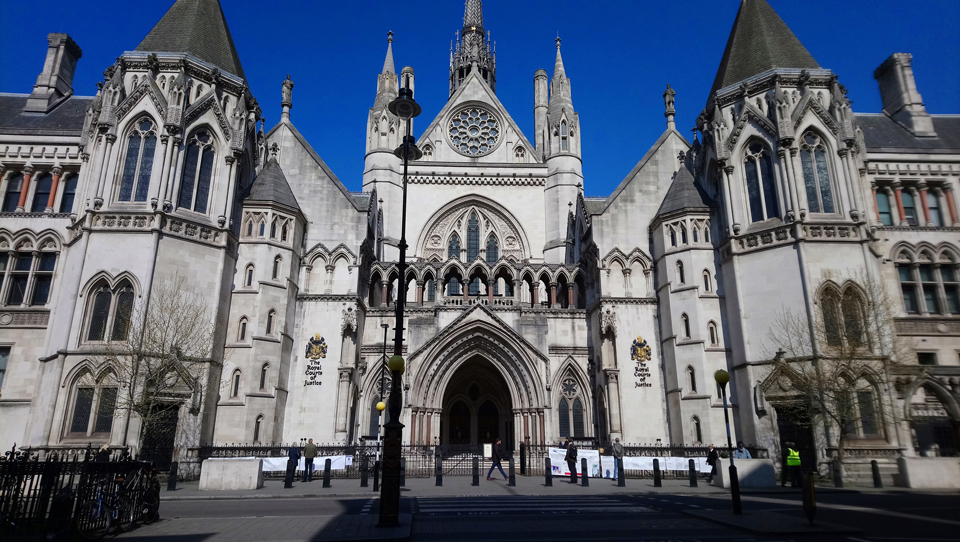I recently attended a Mock Trial at the Royal Courts of Justice in London. They run school workshops but we went as a home education group.
The workshop is to introduce children to the basics of law and how a Trial works. This Trial was about the Suffragettes who were women in the early 1900s who fought for women’s rights. They were involved in marches, arson, breaking windows and similar things. In 1914, when the war broke out, Suffragettes paused their actions to help in the war and women were invaluable help. In 1918, women were granted the vote as long as they were over the age of 30 and qualified by property ownership. In 1928 all women over the age of 21 were granted the vote (the same as men).
This workshop was a Mock Trial based on the true story of Mary Richardson, a keen Suffragette, who was charged with Malicious Damage. In March 1914, Mary was seen slashing the Rokeby Venus painting in The National Gallery with a meat chopper. The Rokeby Venus is a painting of the goddess, Venus, lying on a bed and looking into a mirror that is being held by Cupid.
There are many reasons why Mary slashed the painting. Here are a couple:
- Mary states that she destroyed the painting as a protest against the treatment of Emily Pankhurst. “I have tried to destroy the picture of the most beautiful woman in mythological history as a protest against the Government for destroying Mrs Pankhurst, who is the most beautiful character in modern history.”
- Miss Richardson did not like “men gazing at Venus’s naked body”.
As I was ‘playing’ Mary Richardson, my barrister and I had to research all of this so that we could have a strong case, hopefully enabling me to stay a free woman!
When we arrived at the Royal Courts of Justice, we were led into one of the many actual court rooms for our Mock Trial. Beforehand, all the participants had chosen what role they wanted to play, and we had a script each so we could act out the Trial like the real thing. The roles included:
- The Judge, who sits in their own balcony and keeps order in the courtroom. If the defendant is found guilty of the crime the judge will give the appropriate sentence.
- The Witnesses answer questions presented by the barristers. They tell the court what they know about the case and what they say is used as evidence.
- The Prosecution Team (Barrister and Solicitor) prepare and ask questions to the witnesses to try and prove that the Defendant is guilty.
- The Defendant Team (Barrister and Solicitor) does exactly what the Prosecution Team do but they are trying to prove the Defendant cannot be proven guilty.
- The Jury listen to everything that is said during the trial before reaching a decision. There can be up to 12 jurors. One of the jurors acts as the foreperson, which means they are the person who tells the rest of the court the Jury’s decision. In 1914, during the time of Mary’s trial, the jury would have been all male.
The Jury had an interesting role as they had to make sure that they understood the ‘Burden of Proof’. In a criminal trial the defendant is innocent until proven guilty. The prosecution have to prove that the defendant is guilty but the defence do not have to prove that the defendant is not guilty. Therefore, the Jury has to believe ‘beyond all reasonable doubt’ that the defendant is guilty to give a guilty verdict and the decision must be based on evidence heard in court.
The case we had to discuss is very interesting, as there were lots of different ways to prepare the best outcome for me. I decided with my Barrister that I would plead not guilty, however, as there were witnesses to my actions, I would admit that I had slashed the painting and the reasons for that, in the hope that my sentence would be reduced.
In the real trial, Mary was found guilty and sentenced to eighteen months imprisonment. In our trial I was also found guilty, but only sentenced to six months. The reason Mary and I were found guilty is because there are two main elements that need to be proven for malicious damage. This is where the person:
- Intentionally or recklessly
- Causes destruction or damage to someone else’s property.
The prosecution team had enough evidence in the case to prove that malicious damage had been caused.
I really recommend doing a workshop at The Royal Courts of Justice. It was very informative and great fun.






